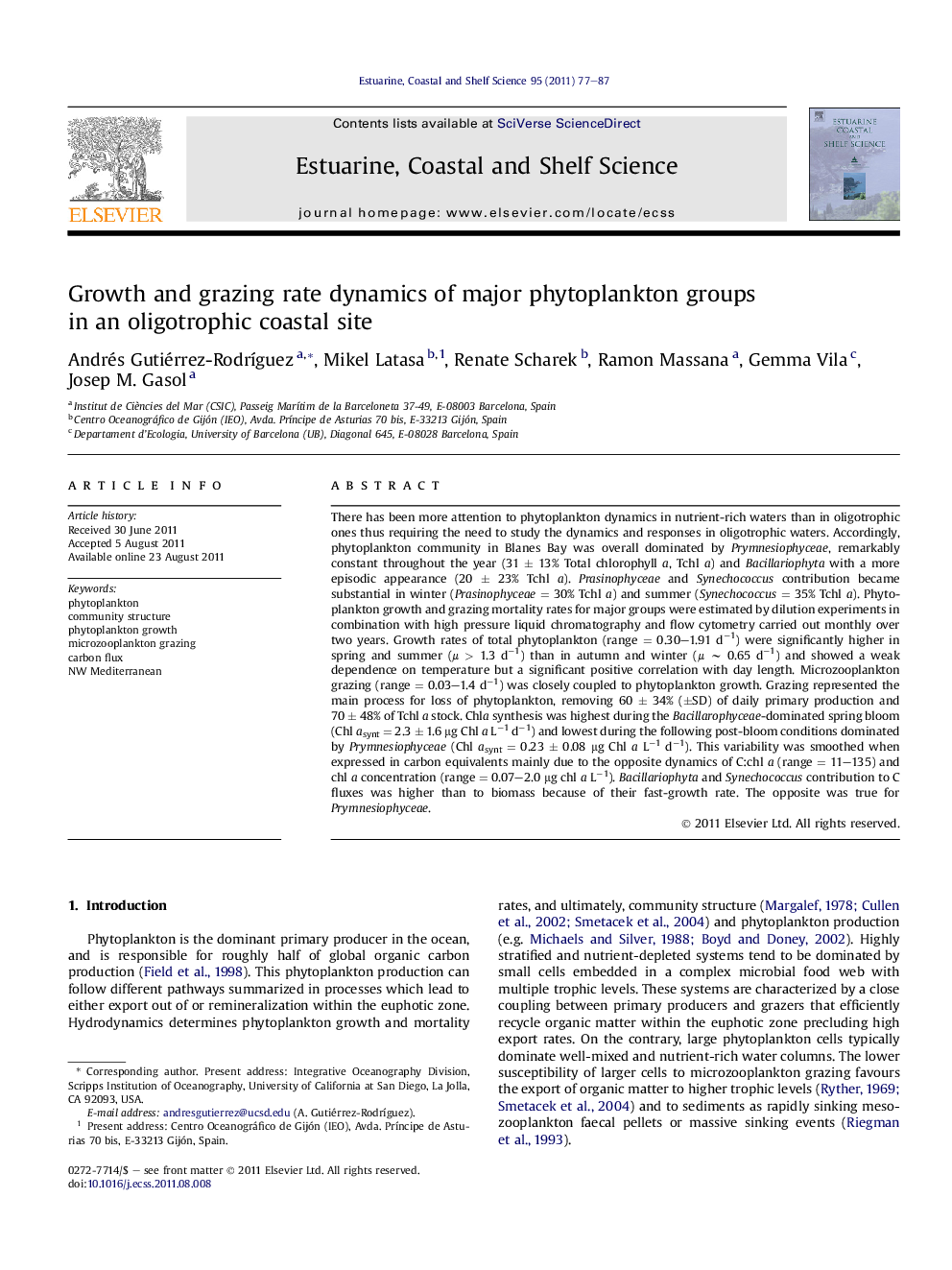| کد مقاله | کد نشریه | سال انتشار | مقاله انگلیسی | نسخه تمام متن |
|---|---|---|---|---|
| 4540505 | 1326673 | 2011 | 11 صفحه PDF | دانلود رایگان |

There has been more attention to phytoplankton dynamics in nutrient-rich waters than in oligotrophic ones thus requiring the need to study the dynamics and responses in oligotrophic waters. Accordingly, phytoplankton community in Blanes Bay was overall dominated by Prymnesiophyceae, remarkably constant throughout the year (31 ± 13% Total chlorophyll a, Tchl a) and Bacillariophyta with a more episodic appearance (20 ± 23% Tchl a). Prasinophyceae and Synechococcus contribution became substantial in winter (Prasinophyceae = 30% Tchl a) and summer (Synechococcus = 35% Tchl a). Phytoplankton growth and grazing mortality rates for major groups were estimated by dilution experiments in combination with high pressure liquid chromatography and flow cytometry carried out monthly over two years. Growth rates of total phytoplankton (range = 0.30–1.91 d−1) were significantly higher in spring and summer (μ > 1.3 d−1) than in autumn and winter (μ ∼ 0.65 d−1) and showed a weak dependence on temperature but a significant positive correlation with day length. Microzooplankton grazing (range = 0.03–1.4 d−1) was closely coupled to phytoplankton growth. Grazing represented the main process for loss of phytoplankton, removing 60 ± 34% (±SD) of daily primary production and 70 ± 48% of Tchl a stock. Chla synthesis was highest during the Bacillarophyceae-dominated spring bloom (Chl asynt = 2.3 ± 1.6 μg Chl a L−1 d−1) and lowest during the following post-bloom conditions dominated by Prymnesiophyceae (Chl asynt = 0.23 ± 0.08 μg Chl a L−1 d−1). This variability was smoothed when expressed in carbon equivalents mainly due to the opposite dynamics of C:chl a (range = 11–135) and chl a concentration (range = 0.07–2.0 μg chl a L−1). Bacillariophyta and Synechococcus contribution to C fluxes was higher than to biomass because of their fast-growth rate. The opposite was true for Prymnesiophyceae.
Journal: Estuarine, Coastal and Shelf Science - Volume 95, Issue 1, 1 November 2011, Pages 77–87